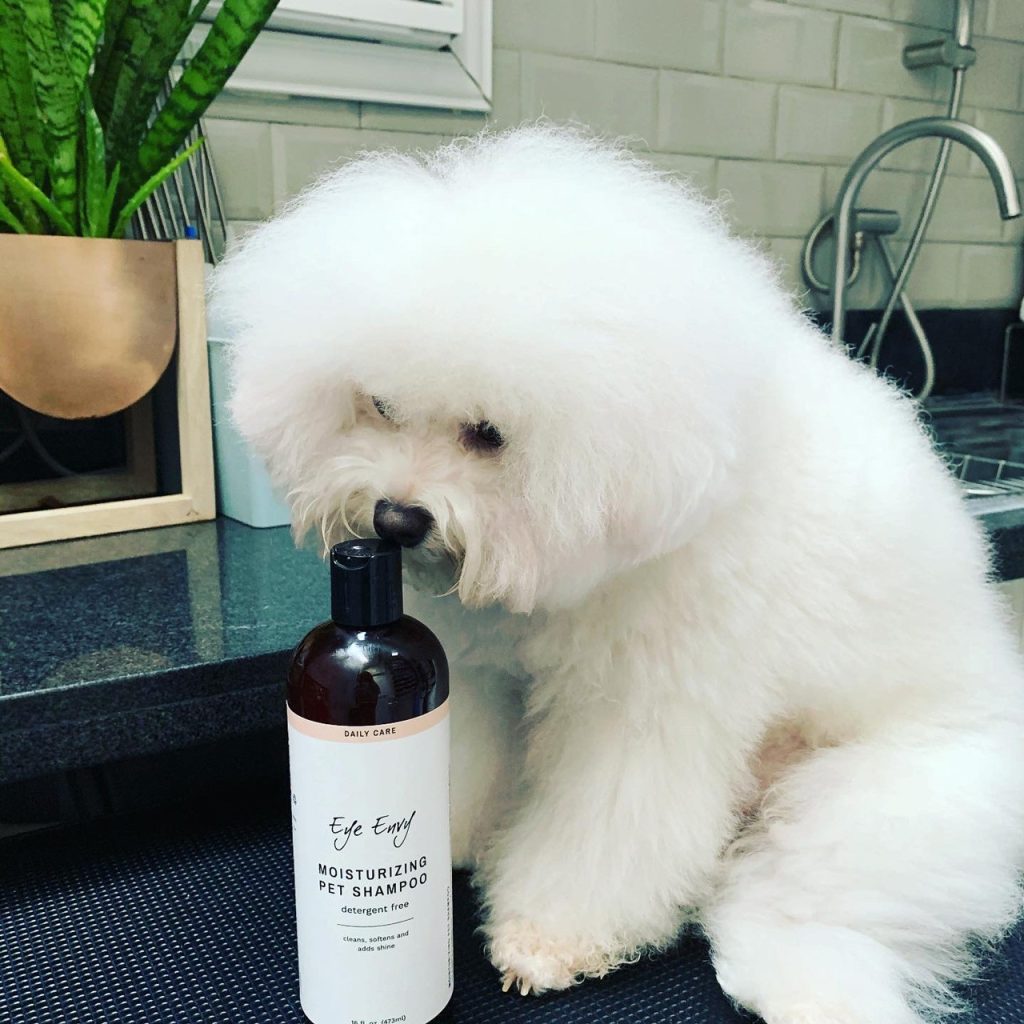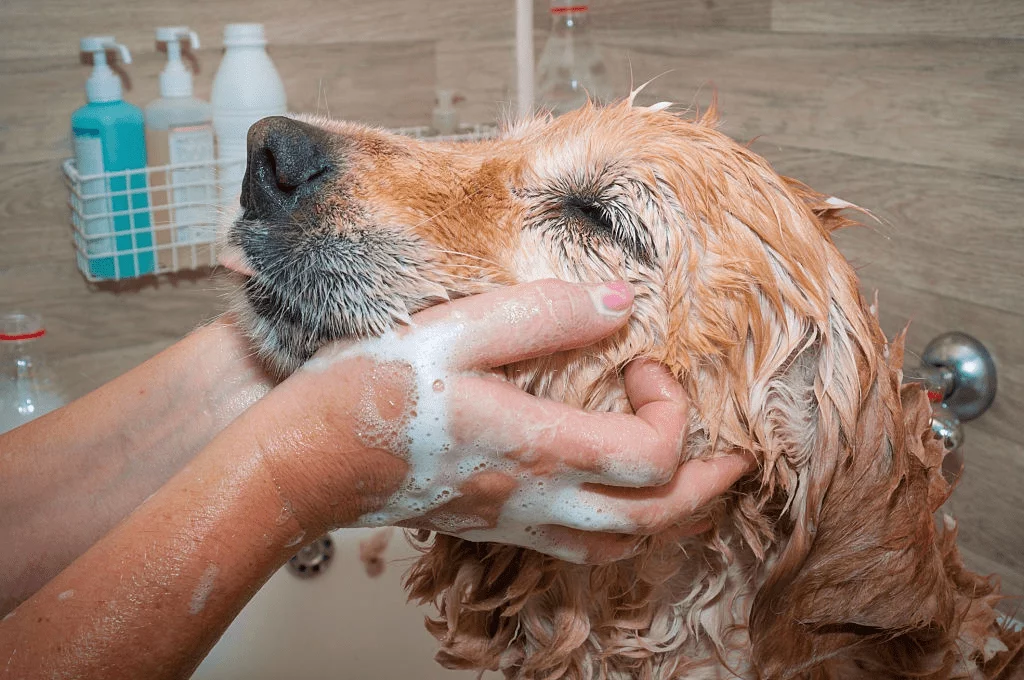 Dog shampoo keeps your dog’s skin and hair clean. There are various types of shampoos, from additive-free shampoos that emphasize gentleness to shampoos that smell great. In addition, there are products for different breeds of dogs, such as Chihuahuas, Pomeranians, and Shiba Inus, and some people may not know which one to choose. In this issue, we would like to explain how to choose a shampoo for dogs!
Dog shampoo keeps your dog’s skin and hair clean. There are various types of shampoos, from additive-free shampoos that emphasize gentleness to shampoos that smell great. In addition, there are products for different breeds of dogs, such as Chihuahuas, Pomeranians, and Shiba Inus, and some people may not know which one to choose. In this issue, we would like to explain how to choose a shampoo for dogs!
Is Dog Shampoo Necessary?
You may not feel the need to shampoo your dog, especially if he is an indoor dog, but if excess sebum and dead scrape cells are not removed, it may cause skin problems. Be sure to shampoo your dog even if surface dirt and odor are not noticeable, and keep his skin and coat clean.
Dogs’ skin is diluent than humans’, so some homo shampoos may be overly aggressive. Be sure to select the best shampoo for dogs.
How To take shampoo for Dogs
The right shampoo for the right purpose
Dog shampoos can be divided into two categories: medicated shampoos and sweetheart shampoos. Select the conquer one considering the desired effect and the condition of your dog’s skin.
Medicated shampoo
Choose a medicated shampoo if your dog has a skin disorder or problem, and you want to improve its symptoms. There are versatile types of shampoos, from those that kill bacteria and fungus to those that reduce stickiness caused by excess sebum. There are also products that contain ingredients that winnow out fleas and ticks and prevent parasites.
Beauty Shampoo
If you are looking for a good coat without major health problems, choose a beauty shampoo. Not only does it transfer accumulated dirt, but it can also be expected to increase or decrease the volume and luster of the coat.
 One that does not nettle the skin
One that does not nettle the skin
Weakly acidic shampoo
If you want to emphasize gentleness, we recommend a mildly acidic shampoo. The shampoo’s mild acidity, which is the same as a dog’s skin, reduces the possibility of upsetting the dog’s balance, and also minimizes the risk of skin irritation.
Also, if you want to be peculiarly specific about the ingredients, you should also pay attention to the cleaning ingredients. Those using surfactants known as “higher alcohols” are characterized by their high cleaning power. This may remove too much sebum and weaken the barrier function.
However, there is no need to forcibly keep off alkaline shampoos or shampoos with strong washing power. The risk is not high for any dog, and in some cases, such as when the dog is to a great extent soiled, it is better to use them aggressively. It is important to consult with your veterinarian or the producer to select the appropriate product.
If you have allergies or dryness
If your pet has allergies and has rough skin, or if his skin is noticeably dry, it is safe to avoid shampoos containing sulfur or made from plants. Sulfur ingredients may remove too much sebum or plant ingredients may worsen allergy symptoms, so please check the product description carefully before purchasing.
 Products with separate shampoo and treatment agents
Products with separate shampoo and treatment agents
Choose products with separate shampoo and treatment agents in order to remove dirt thoroughly.
Rinse-in shampoos or treatment-in shampoos, as they are called, mix two liquids with contrasting purposes: one to remove dirt and the other to coat the coat, which may cancel out the effects of each. The two processes, cleaning and finishing, should be kept separate.
Some may think, “I don’t need a rinse,” but if the shampoo is alkaline, some treatment products must be used in conjunction with the shampoo to restore the skin and hair to its natural mild acidic state. It is also essential to properly understand the characteristics of the product before using it.
 Products that do not smell too strong
Products that do not smell too strong
Another important point when choosing a shampoo for dogs is whether or not the scent is too strong. Dogs have a very acute sense of smell and can detect some types of smells 100 million times better than humans, so strong scents can be stressful for them.
Also, dogs may be anxious about their own smell disappearing after shampooing, or they may not be able to distinguish between smells because the shampoo’s scent interferes with their sense of smell.
Good foaming and rinsing is best
The ability to lather and rinse off lather is also a major factor. Choose products that lather quickly and rinse off quickly to reduce shampooing time, which tends to be stressful for dogs. Good lather also affects skin contact and cleaning power, so it is best to choose a product that produces soft, fine lather.
Differences in Finish and Additional Effects
Oatmeal or water-soluble sulfur
If you are concerned about dry fur, use a shampoo that contains moisturizing ingredients such as “oatmeal” or “water-soluble sulfur. This will not only moisturize the skin, but also make the surface of the coat shiny. Finishing with a treatment that coats the fur and has a repairing effect will make the fur look even better.
Silicon-containing/non-silicon
The presence or absence of silicone also makes a difference in the finished product. If you want to calm down your hair that is fluffy and voluminous, we recommend using a treatment that contains silicone. Since the hair will be coated, it will easily become silky and manageable. On the other hand, if you want to add volume and fluffiness, you should use a shampoo that does not contain silicone.
Tea tree and hiba-based shampoos
Shampoos containing “tea tree” and “hiba” are also recommended during the hot summer months. They leave a refreshing finish, and the herbal scent can be smelled during walks. If your dog does not suffer from allergies to plant-derived shampoos, you should actively use them for the health of his skin.

Keep in mind that the appropriate frequency for shampooing dogs is at least once a month. Since dogs have thinner skin than humans and turnover occurs in about three weeks, it is recommended that dogs be washed once every two weeks if possible. In addition, during the rainy season, the humidity can worsen the condition of the skin, so please check the skin frequently before deciding when to shampoo.